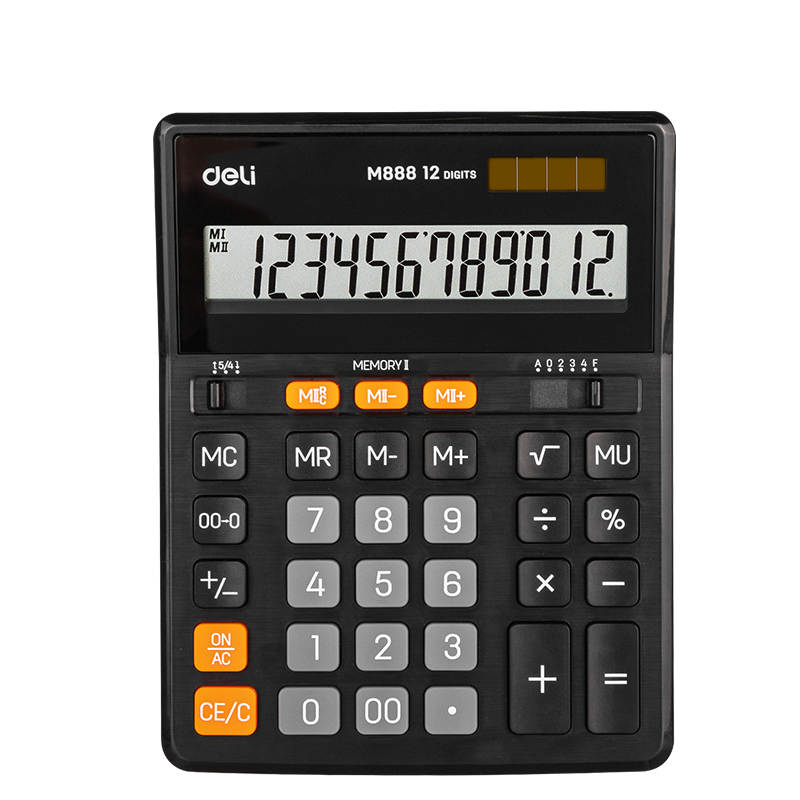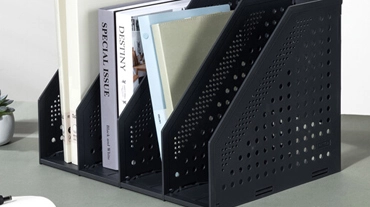Modern electronic calculators are hand-held electronic machines that can perform mathematical operations. They have integrated circuit chips, but their structure is much simpler than that of computers. It can be said to be the first generation of electronic computers (computers), and their functions are weaker, but they are more convenient and cheap and can be widely used in commercial transactions, which is one of the necessary office supplies. In addition to displaying calculation results, there are often overflow indications, error indications, etc. Scientific calculators are powered by an AC converter or batteries, which can be recharged with an AC converter or solar converter. To save power, the calculators all use large-scale integrated circuits made of CMOS technology.

A calculator is generally composed of an arithmetic unit, a controller, a memory, a keyboard, a display, a power supply, and some optional peripherals and electronic accessories, through manual or mechanical equipment. The arithmetic units and controllers of low-end calculators realize simple serial operations by digital logic circuits, and their random access memory has only one or two units for accumulative storage. A high-end calculator in science implements various complex calculation programs by a microprocessor and a read-only memory and has more random storage units to store input programs and data. The keyboard is the input part of the calculator and generally adopts the contact type or the sensor type. To reduce the size of the calculator, one key often has multiple functions. The display is the output part of the calculator, such as a light-emitting diode display or a liquid crystal display. integrated circuit (see complementary metal-oxide-semiconductor integrated circuit), and is equipped with an automatic power-off circuit when it is not operated at regular intervals. Optional peripherals for calculators include micro-printers, cassette tape drives, and magnetic card machines.
From a certain point of view, "computer" in a broad sense includes an "electronic calculator". There are also integrated circuits in electronic calculators, but the functions of calculators are simple, the price is cheaper, and it is good for portability and stability.
In the past, objects such as the abacus, Napier's bones, books of mathematical tables, engineering slide rules, or mechanical adding machines played an auxiliary role in numerical calculations. Calculators originally referred to professionals who run mathematical calculations with pen and paper. Such semi-manual calculations are tedious and error-prone. Modern calculators and stationery office equipment are powered by electricity and come in many shapes and sizes, from cheap, simple devices the size of credit cards to special calculators with printing capabilities.
In addition to commonly used calculators, there are also special calculators, especially special calculators in science, such as personal income tax calculators, mortgage calculators, fuel consumption calculators, etc., which generally exist in the form of software.
Then there is the integrated function calculator (programmable calculator). This kind of calculator generally exists in the form of software. In addition to the functions of common calculators, it can also be programmed or formulated by the user himself, and the more complicated calculation steps or formulas can be saved, which can be called later to carry out calculations. Repeated calculations can even print the calculation process and results. It can realize the functions of most special calculators, such as personal income tax calculation, unit conversion, etc., can be programmed and calculated by users themselves. Users can also go to the Internet to download formula files prepared by others for calculation. The comprehensive calculator has a wide range of applications, not only for ordinary users but also for programmers. It is more suitable for complex calculations in various design industries, such as construction, water conservancy, machinery, transmission, gears, structures, medicine, and even graduation projects for college students. Primary school students can also use it to learn mathematics knowledge and some simple programming calculations, which is representative of this type of calculator.




